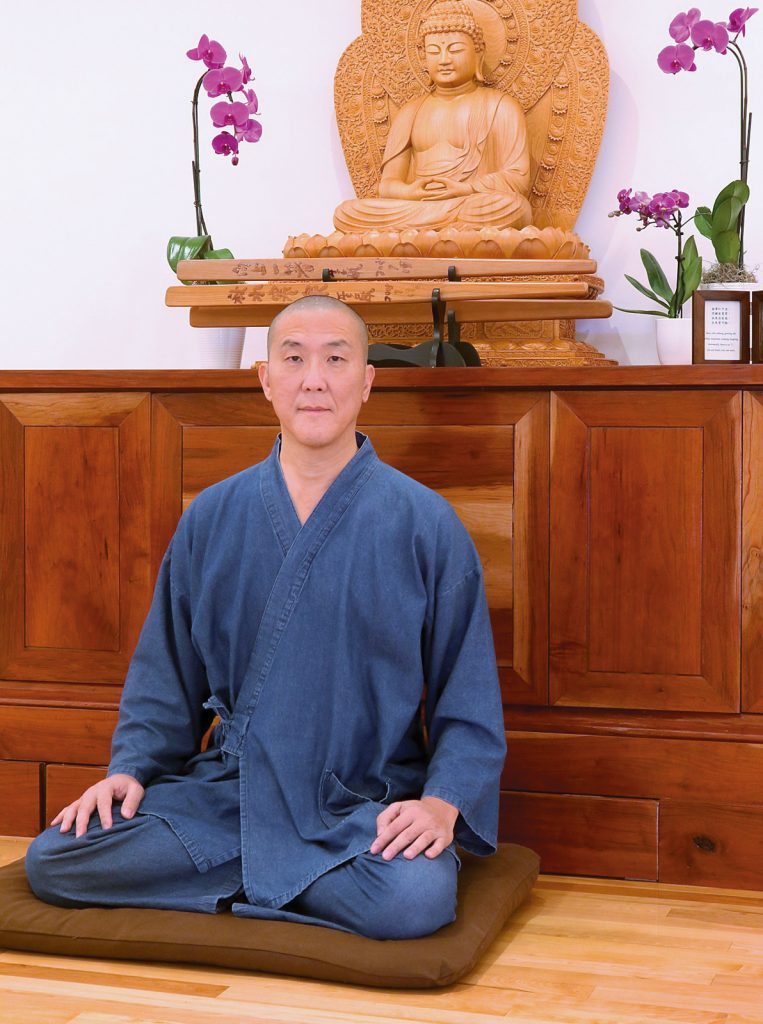Where did you grow up? I was born in Taiwan and grew up in the New Jersey–New York area.
When did you become a Buddhist and why? In 1972, my whole family and I took refuge in the three jewels [the Buddha, his teachings, and the Buddhist community] with an ascetic monk in Taiwan named Master Guangqin (1892–1986). I had no idea what it meant to be a Buddhist, but I was naturally drawn to seated meditation and Guangqin. He taught me how to sit in the full lotus posture and focus on my breath.
Who became your teacher? After coming to New York, I met Master Sheng Yen (1931–2009) when I was 11. I consider him my root teacher, my spiritual father. The three decades with him shaped every aspect of my life.
What’s your favorite breakfast on retreat? We were served only oatmeal and fruit, so that became my favorite!
What’s your daily practice? Each day is a new beginning. This moment is practice: grounding and offering. Grounding means relaxing into whatever situation I am in. Offering means responding to anyone or anything I encounter by not injecting my sense of self. This last part is the key—offering oneself by letting go of the self.
What’s the longest you’ve gone without meditating? How do you get back on track? After so many decades of daily seated meditation practice, I never really stopped. But this is a limited way of understanding seated meditation. The position is not important; what is important is the attitude.
What was your first job? At a vegetable farm picking tomatoes and peppers. I was 13, and it was totally illegal. My older brother and his friends were all hired to work there, so I got hired. I have fond memories of tomato fights whenever the boss was not around.
Most used emoji? 🙏
♦
This March, join Guo Gu for Tricycle Meditation Month and his Dharma Talks video series, “Silent Illumination,” at tricycle.org/dharmatalks.
Thank you for subscribing to Tricycle! As a nonprofit, we depend on readers like you to keep Buddhist teachings and practices widely available.
